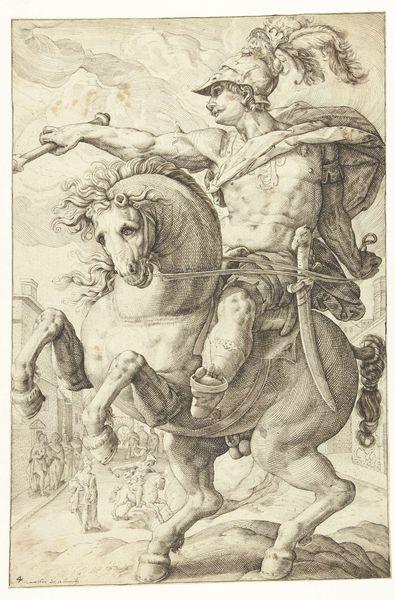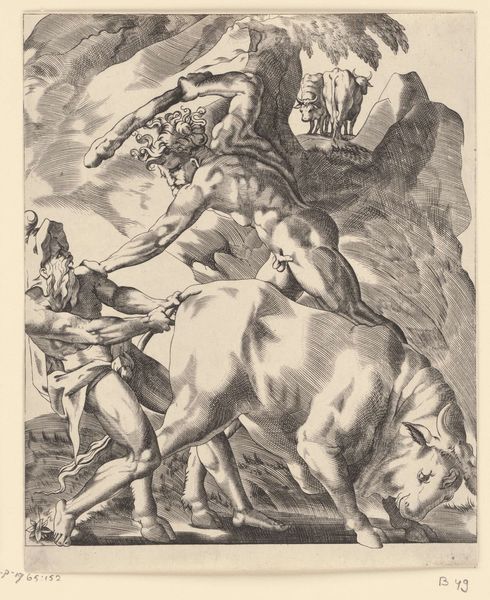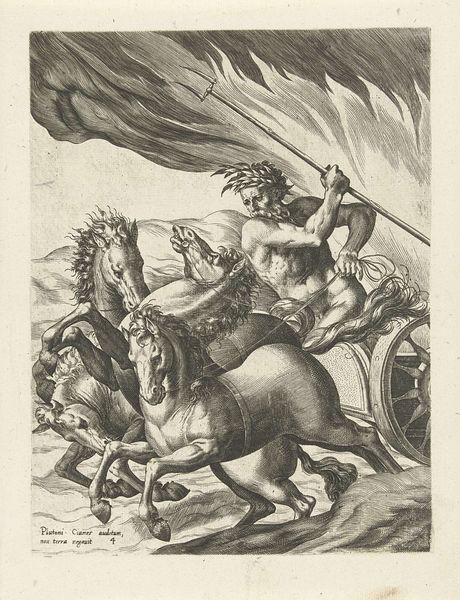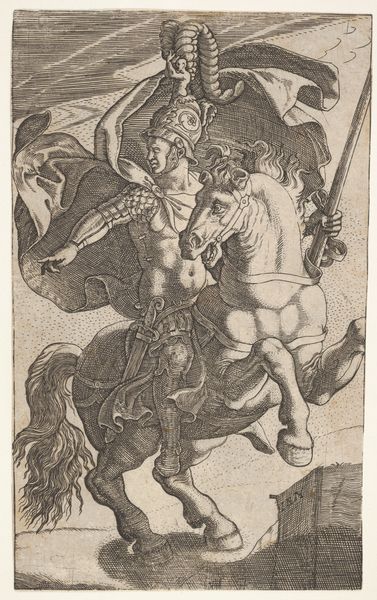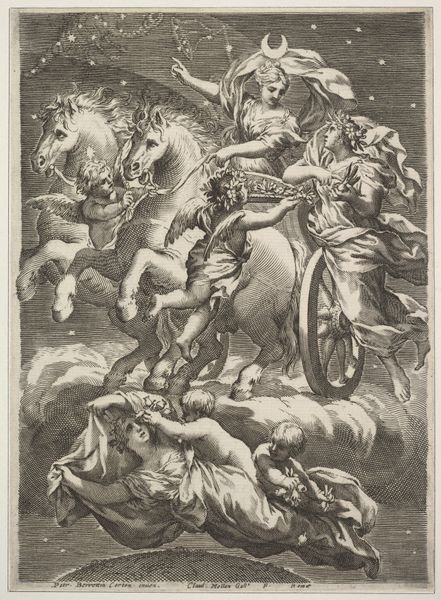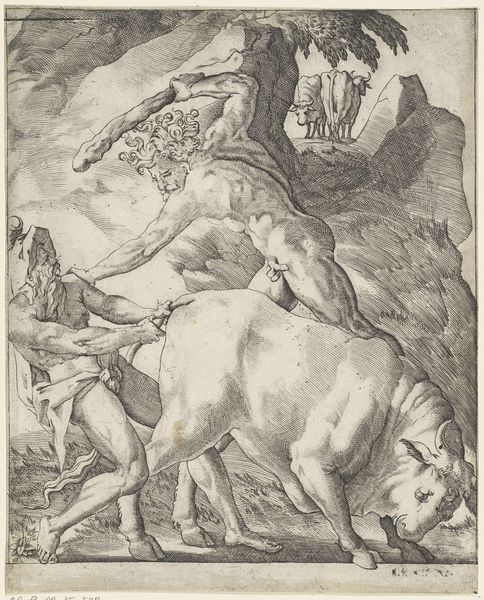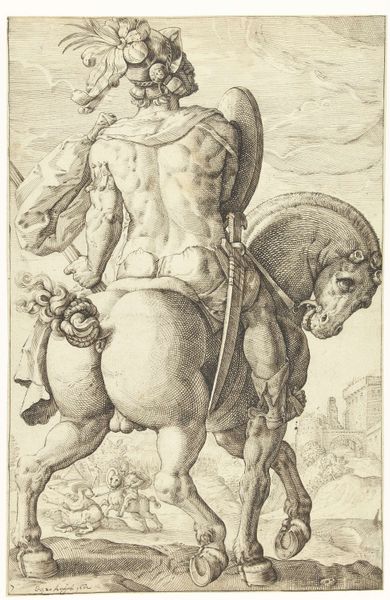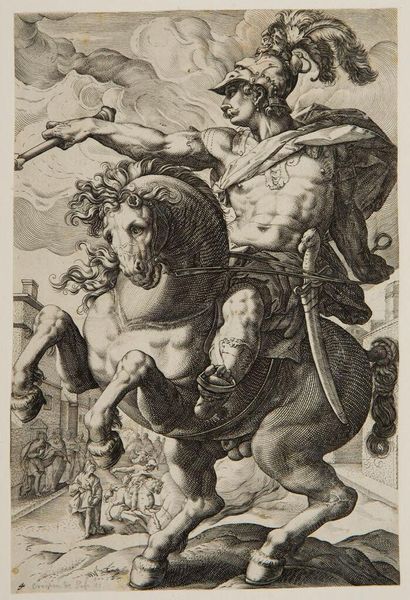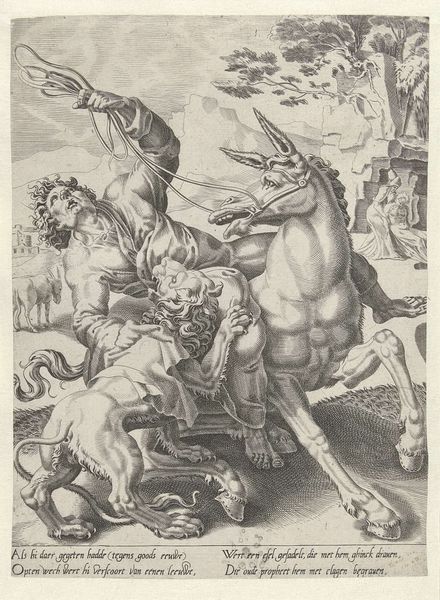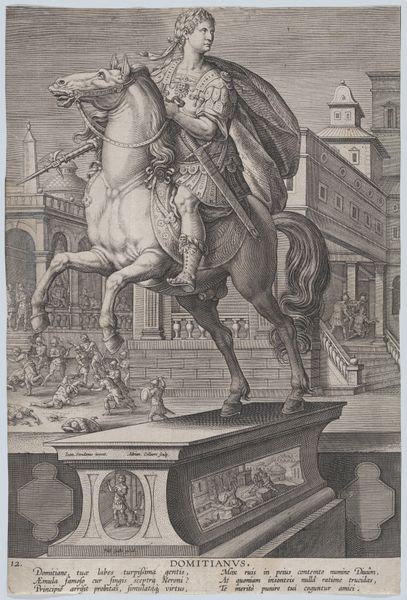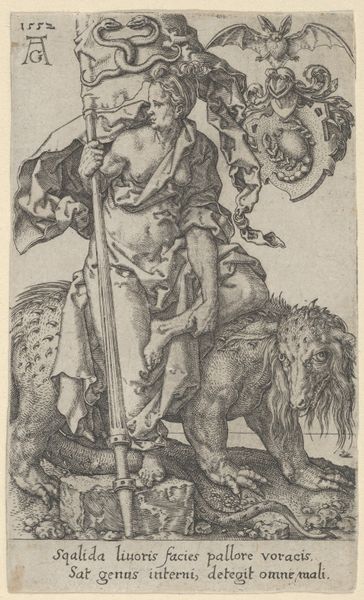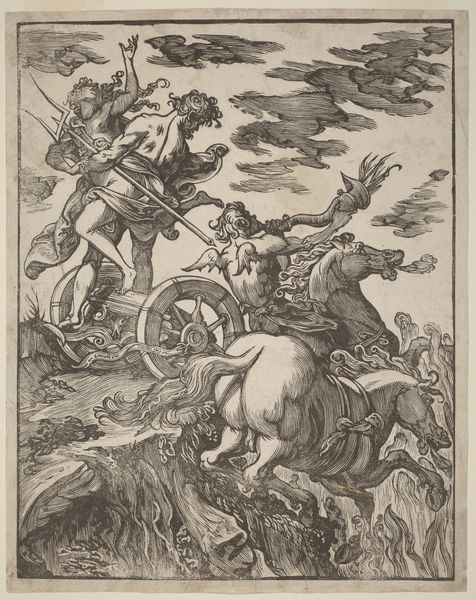
Dimensions: 14 9/16 x 9 1/2 in. (37 x 24.1 cm)
Copyright: Public Domain
Editor: This is Hendrick Goltzius' engraving, "Marcus Curtius, from 'The Roman Heroes'," created in 1586. The dramatic pose and intense detail really give it a heroic, almost theatrical feel. What do you see in this piece? Curator: It's a fascinating work, particularly when we consider its socio-political context. The idealized male form atop the rearing horse immediately evokes power, but also, I would argue, anxieties around power. The legend of Marcus Curtius centers on sacrifice, literally throwing himself into a chasm to save Rome. Can we see this "sacrifice" through a contemporary lens of intersectionality, where individual action must be balanced against its effect on the community, or its root cause analyzed, it is tempting to interpret the piece critically, looking to understand not just heroic action but also structures of power, what stories become normalized, and at whose expense? Editor: So, it's less about celebrating individual heroism and more about examining the systems that necessitate such "heroism?" Curator: Exactly. This image participates in a visual language that naturalizes hierarchies. Goltzius lived during a time of immense social upheaval in the Netherlands, in particular related to religion and oppressive imperial systems. Might there be questions implicit in Goltzius’ piece about the cost of the individual sacrifices demanded by such systems? This work prompts us to consider which bodies are valued and whose sacrifices are glorified, and perhaps why. Editor: I never considered it that way. Seeing it as a reflection of power structures makes the image so much more complex. Curator: And this tension between surface-level grandeur and underlying social critique is something Baroque art, in general, is concerned with. These prints, distributed widely, became instruments of political discourse. So, as we appreciate Goltzius' masterful technique, let's also remain alert to the narratives and potentially conflicted ideological statements it propagates. Editor: Thanks. Now I understand the historical roots more deeply, beyond just the surface-level image. Curator: It's by situating artworks in their historical, cultural moment, and remaining attentive to social narratives and potential hidden inequities that art historical discourse allows the fullest understandings.
Comments
No comments
Be the first to comment and join the conversation on the ultimate creative platform.
